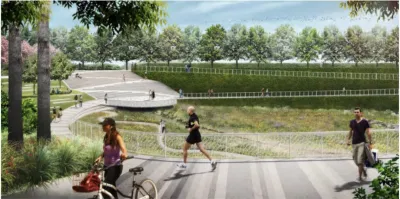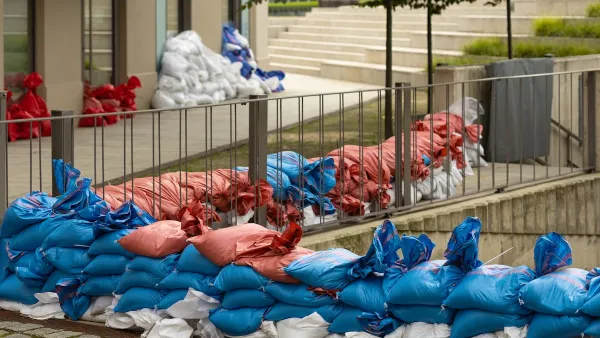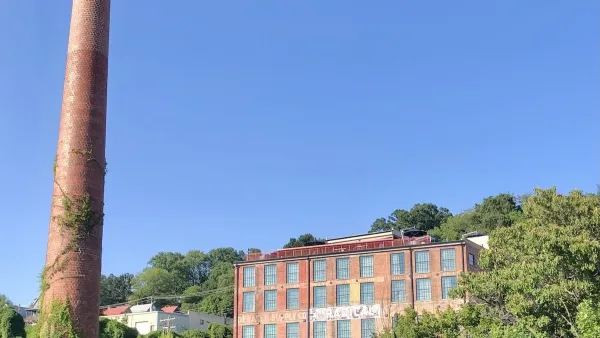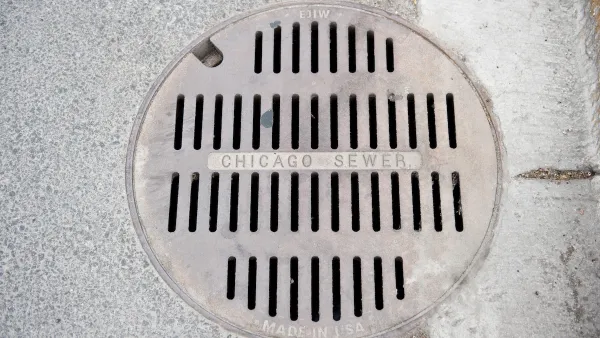As hurricane seasons get more destructive, a less reactionary approach to stormwater infrastructure investment may be needed.

"Disasters like Hurricane Florence and Hurricane Michael only represent a small taste of the expected rise in daily flooding and other chronic environmental threats we're going to face in years to come," Joseph Kane writes. And "reactive" approaches to maintaining current legacy systems will only take us so far.
Kane argues that a more proactive approach to resilience investments is needed, one that incorporates greener, longer-term fixes and accounts for the full economic and social benefits those projects could confer. "Green infrastructure projects like rain gardens can be smaller, more distributed, and efficient over time," he writes. "The immediate returns of these projects may be less clear, relative to the upfront costs, but the reduced runoff, treatment needs, and pollution loads can lead to greater savings."
Current approaches, Kane says, are both reactionary and isolated from other potential positive factors. "We do not adequately account for the costs of inaction that we face from failing stormwater infrastructure, nor do we account for the broader social benefits of more proactive repairs. Workforce development, for instance, can be a central element in this approach."
Capturing the costs of inaction and the full scope of benefits, he says, could lead to more opportunities to utilize ESG investments and social impact bonds, for instance.
FULL STORY: The US needs a new approach to invest in resilient infrastructure and communities

National Parks Layoffs Will Cause Communities to Lose Billions
Thousands of essential park workers were laid off this week, just before the busy spring break season.

Retro-silient?: America’s First “Eco-burb,” The Woodlands Turns 50
A master-planned community north of Houston offers lessons on green infrastructure and resilient design, but falls short of its founder’s lofty affordability and walkability goals.

Delivering for America Plan Will Downgrade Mail Service in at Least 49.5 Percent of Zip Codes
Republican and Democrat lawmakers criticize the plan for its disproportionate negative impact on rural communities.

Test News Post 1
This is a summary

Test News Headline 46
Test for the image on the front page.

Balancing Bombs and Butterflies: How the National Guard Protects a Rare Species
The National Guard at Fort Indiantown Gap uses GIS technology and land management strategies to balance military training with conservation efforts, ensuring the survival of the rare eastern regal fritillary butterfly.
Urban Design for Planners 1: Software Tools
This six-course series explores essential urban design concepts using open source software and equips planners with the tools they need to participate fully in the urban design process.
Planning for Universal Design
Learn the tools for implementing Universal Design in planning regulations.
EMC Planning Group, Inc.
Planetizen
Planetizen
Mpact (formerly Rail~Volution)
Great Falls Development Authority, Inc.
HUDs Office of Policy Development and Research
NYU Wagner Graduate School of Public Service





























